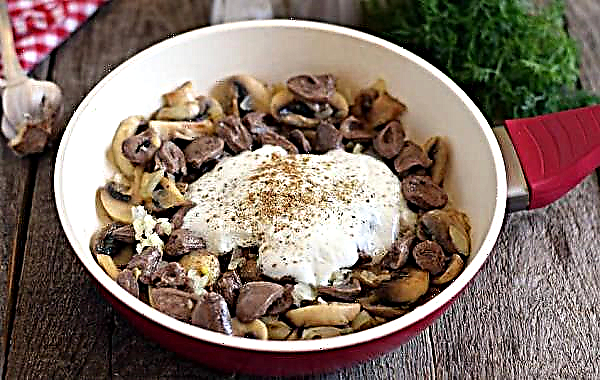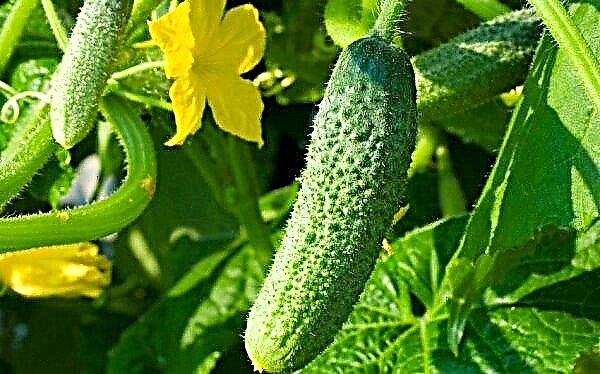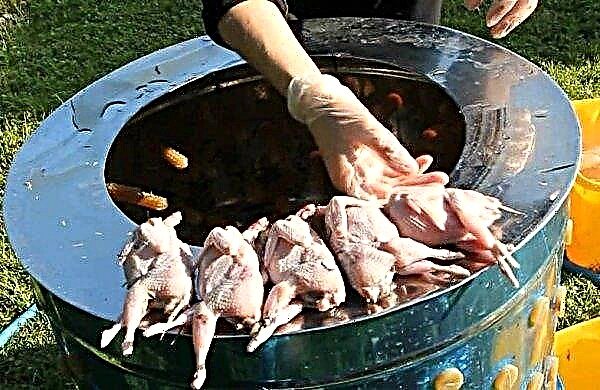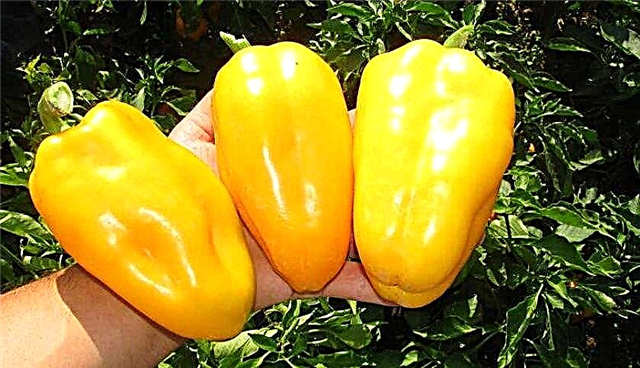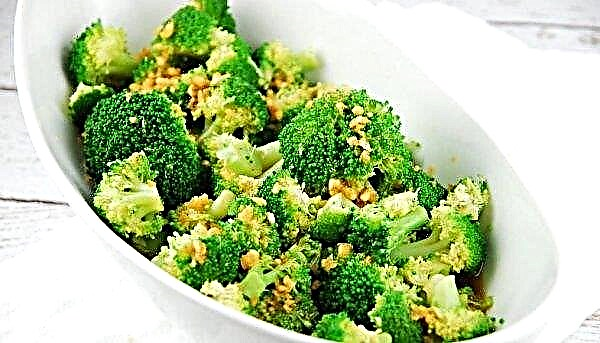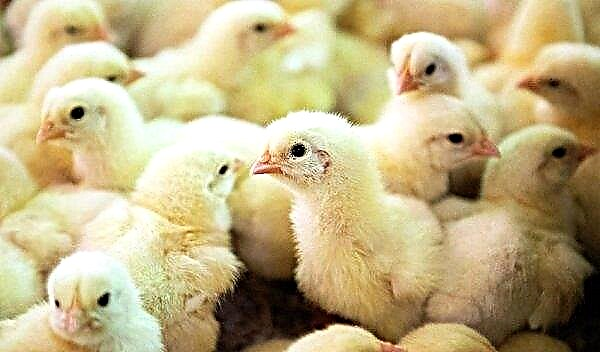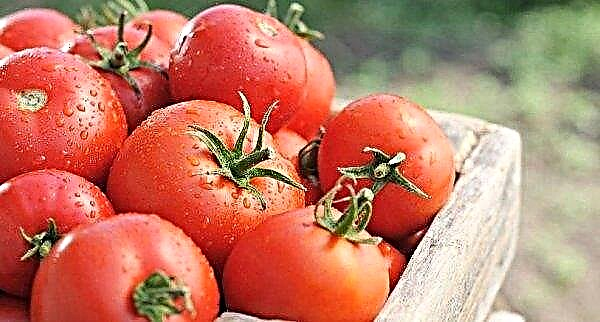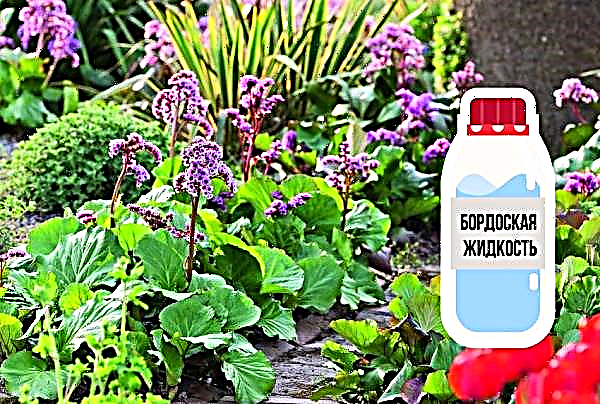Hydrangeas are the most beautiful flowering shrubs that can be found today in many garden plots. The interest of breeders in this plant was reflected in the appearance of many different varieties. Experienced gardeners are advised to choose seedlings that are most resistant to climatic vagaries and diseases. One of these is the hydrangea variety Magic Vesuvius.
Grade description
Panicle hydrangea Magic Vesuvius - a decorative spreading shrub from the Magical series. The plant has strong stiff red-brown shoots that grow rapidly and do not require support. An adult shrub has almost the same height and width - up to 1.5 m. In spring, dark green leaves bloom on the plant, and in June the first buds appear.
Hydrangea blooms are particularly splendid. Quite large flowers are collected in luxurious narrow pyramidal panicles, which, with their long lengths of up to 30 cm, do not fall under the weight of the buds. Flowers initially have a white color, but quickly change it, “dressing” in pink, and then in a rich red outfit. Flowering continues from June to September.

Magical Vesuvio shrubs are favorites of landscape designers. They are able to transform even the most unsightly garden plot. The plant looks great as an independent object of the landscape and in a group planting. Due to the addiction of culture to slightly acidic soils, it is often planted in compositions with conifers. Shrubs can be decorated alleys or hedges, ennoble a recreation area or a beautiful front door to the adjacent territory.
Did you know? Hydrangea — one of the oldest plants. Archaeologists have established that it grew on the planet more than 60 million years ago.
Winter hardiness
Hybrid hydrangea varieties, including the Magic Vesuvio variety, tolerate frosts relatively well, as scientists try to give them this property in the selection process. Winter hardiness is determined by the worldwide accepted USDA scale developed in the USA. According to her indicators, this variety belongs to zone 4, i.e., the plant is able to survive a drop in temperature to -29 ° C.
This indicator can be called quite high, because there are varieties that poorly withstand cooling to -23 ° C, such as, for example, Hydrangea Blauma. Basically, in temperate and southern latitudes, you can do without covering the bush for the winter; a layer of mulch is enough to protect the roots. If you are afraid that the winter will be cold, but snowless, it is better not to risk it and wrap up a decorative bush warmer. In the northern regions, plants need to be covered. This rule also applies to young seedlings, which are still weak enough to survive severe frosts.

Landing rules
Hydrangea planting is carried out in late April or early May.. In the southern regions, you can plant in early September, but not later, since the bushes do not have time to take root and grow stronger before severe frosts. For planting, seedlings should be chosen, 2-3 years old. Have a good look at the material - it should not have dry or damaged shoots.
It is important to choose a good site. Variety Magic Vesuvius prefers to grow in partial shade, and illuminated areas are allowed in which direct sunlight does not fall longer than 6 hours a day. Otherwise, burns may appear on the leaves of the shrub. The place should be calm. A good solution would be to plant hydrangeas near tall conifers, the openwork crown of which will shade the plants. You can also choose a place near the building, the fence.

Hydrangea is very fond of moisture, but waterlogged soil is dangerous for its root system. You can not plant shrubs in wetlands and lowlands. If the garden is located in an area with high groundwater, it is recommended to drain.
The soil for planting should be loose and nutritious. The best soil composition can be prepared from garden soil, sand and peat (2: 1: 1). 5-7 kg of humus for each plant should be added here. Hydrangea loves slightly acidic soils with a level of about 5 pH. Citric or acetic acid is used for acidification, diluting 60 g in a bucket of water (per 1 m²).
Dig a hole about 50 cm wide and deep for planting a bush. If you plan to place several bushes in one area, observe an interval between them of at least 1 m. Carefully remove the seedling from the container with the earthen lump and place it in the pit so as not to deepen the root neck. Fill the remaining soil, tamp lightly and water abundantly, spending about 10-12 liters of water. In the end, you need to sprinkle the soil with a mulch layer of about 10 cm. Horse peat, sawdust or fallen needles are best suited - these materials will also slightly acidify the soil.

Flower care
Hydrangea is responsive to care. The plant needs regular watering, top dressing and other agricultural practices aimed at the successful development and flowering of the bush.
Watering
As mentioned earlier, hydrangea is very fond of moisture, and consumes it in quite a large amount. This is due to the surface root system, which is not able to extract moisture from the deep layers of the soil. Watering should be carried out twice a week, delivering 10 l of water to each instance. During hot periods, you can increase the number of water treatments.
Important! Hydrangea should be watered at the root, since the mechanical effect of water drops on leaves and inflorescences can adversely affect decorativeness.
Several times during the season it is recommended to loosen the soil, but you need to do this carefully so as not to damage the roots. Do not go deep more than 8-10 cm. At the same time, it is necessary to weed and mulch the soil with a new layer of needles or peat.

Fertilizer
Top dressing is a must. The soil under the bushes is quickly depleted and, if you do not fertilize it in time, the plant will hurt, lag behind in development, and flowering may never come.
The main dressings are applied 4 times per season:
- the first - in early spring. After wintering, shrubs need nutrients that will stimulate the growth of new shoots, the development of the crown. Nitrogen-containing top dressing is good during this period. For example, you can use urea: for 1 bush make a solution of 25 g of the product and 10 l of water. It is also useful to sprinkle the near-trunk circle with the granular mineral composition Nitroammofoski;
- the second is the period of formation of flowers. Now the plant needs such elements as potassium, phosphorus, so the introduction of the Fermix fertilizer will be a good solution;
- third - the beginning of flowering. It is necessary once again to feed the shrubs with “Ferimix”;
- fourth - after flowering. During this period, flower stalks of the next season begin to form on the shoots. As a fertilizer should use a solution of superphosphate and sulfuric acid, taken at 1 tbsp. l and diluted in 10 liters of water.

Pruning
Shrubs should be sanitized periodically. The procedure is to remove dried, damaged or painful areas in time that will prevent the plant from developing, and can also provoke insect attacks. The first sanitary haircut is carried out in early spring, the last - in the fall, the rest - during the growing season.
Important! The places of cuts are recommended to be treated with garden var — So they will heal faster and will not cause the development of infection, attacks of insect pests.
Flower buds of panicled hydrangea are formed on the shoots of the current year, so in the spring it is advisable to get rid of last year's branches that thicken the planting. The shoots are cut so that one pair of buds remains. In autumn, all dry inflorescences are removed from the bushes.

Winter preparations
Preparation of hydrangea Magic Vesuvius for winter is to carry out the following activities:
- pruning of the bush with the removal of dried inflorescences and leaves located on the bottom of the bush;
- weeding and cleaning soil from biological debris, including trimmed fragments, fallen leaves, weeds, etc .;
- watering and mulching the soil. For winter, you need to lay a thicker layer of mulch up to 20 cm high;
- chemical treatment of diseases and pests;
- construction of a shelter, if necessary. The branches of the bush must be tilted to the ground, fixed and covered with non-woven material (agrofibre, burlap). Then a layer of sawdust is poured, after which it is covered again, but already using perforated polyethylene. In a snowless winter, you can additionally cover it over the spruce branches.
Breeding methods
Hydrangea Magic Vesuvius can be propagated at home. It should be noted right away that it is not worth undertaking sowing seeds. This method is used by breeders to breed new species. Trying to propagate a hybrid variety by seeds, you will be greatly disappointed, as the new plant will not take over the biological characteristics of the mother.
To reproduce, use one of several methods:
- Cuttings. Cuttings can be harvested in the spring, cutting off the tops of green shoots, or in the summer (mid-July), collecting material from the woody branches in the lower part. On cuttings should be 2-3 pairs of leaves. The lower pair must be removed, and the remaining leaves should be shortened by a third. The cuttings are soaked for 10 hours in an Epina solution, after which they are removed, powdered by the growth stimulator Kornevin, and planted in wet sand to a depth of 3 cm. The planting should be sprayed and covered with a film or glass. A container with a bed is installed in a darkened area, periodically watered. Rooting will occur in a month. Young seedlings are placed in different pots and grown up to 2 years of age, after which they can be transplanted into the open ground.
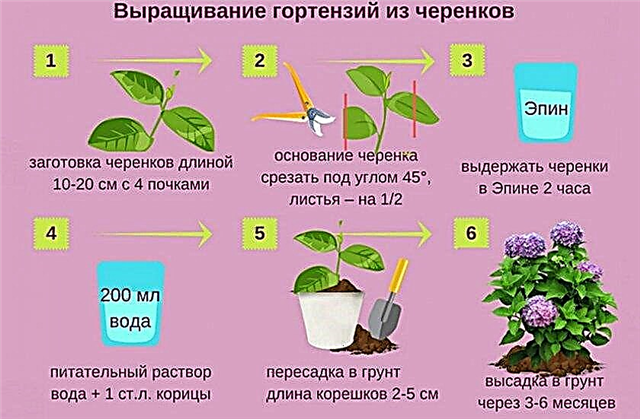
- Layering. In the spring, take a side strong shoot from the bush, tilt it to the ground and fix it. You can pre-dig a shallow (up to 10 cm) ditch and place the branch directly in it. Sprinkle the shoot with soil and water abundantly. Make sure that the soil does not dry out; moisten it constantly. Rooting occurs after 2 weeks, you will determine this by the emergence of new sprouts. During this period, you can separate the new bush from the mother and transplant it into the bed for growing.
- Offspring. This method is best done in the fall - in September. The soil under the bush needs to be loosened a little to get to the rhizome. Next, with a sharp knife, the shoots are separated and planted on a separate platform, where the plant will develop up to 2 years of age. For the winter, you must definitely insulate the landing well.
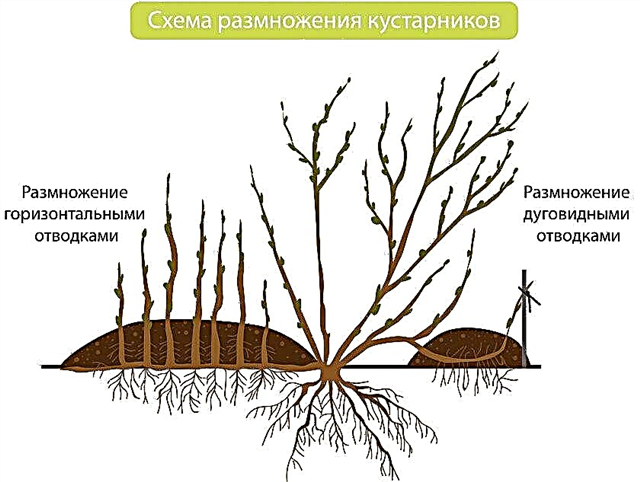
- Dividing the bush. This method can rightly be called the simplest and fastest. Most often, the division of the bush is carried out during the transplant, which hydrangea needs every 5-7 years. The shrub must first be abundantly watered, and then gently dig under it from all sides and removed from the soil. The roots are shaken off the ground and divided into several fragments. The material obtained in this way needs to slightly shorten the ends of the shoots and roots, after which you can place them in new areas.

Diseases and Pests
Panicled Hydrangea Magical Vesuvio has a certain immunity to disease. If you have chosen the right site for planting and do not forget to care for the crop, the likelihood of diseases or the appearance of insects is small. Nevertheless, some risk remains, since many infections are transmitted by the wind, groundwater from other plants. It is important to identify the disease in time and proceed to its treatment.
Did you know? Hydrangea — not only an ornamental, but also a healing plant, which is used to treat diseases of the kidneys and prostate gland.
The most dangerous ailments are the following:
- powdery mildew - a fungal disease that often affects young shrubs. It can be recognized by the formation of white-yellow spots on leaf blades, later foliage withers and falls. To cure the plant, you must first remove the affected areas, and then treat the bush with Fitosporin. Do not forget to burn the cut off fragments, as the infection can get from them to other cultures;

- Septoria - fungus that penetrates the soil. It affects the bush from the lower shoots and gradually moves higher. At the same time, small spots are visible on the leaves - white with brown edges. As in the previous case, they trim, and then process the “Rodomit”;
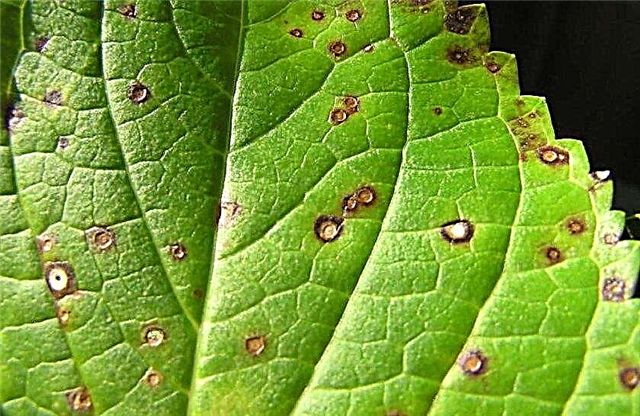
- chlorosis - A disease caused by a lack of iron in the soil. Foliage quickly turns yellow on the depleted shrub, but the central veins remain green. To revive the plant, you need to feed the soil with iron sulfate or aluminum sulfate.
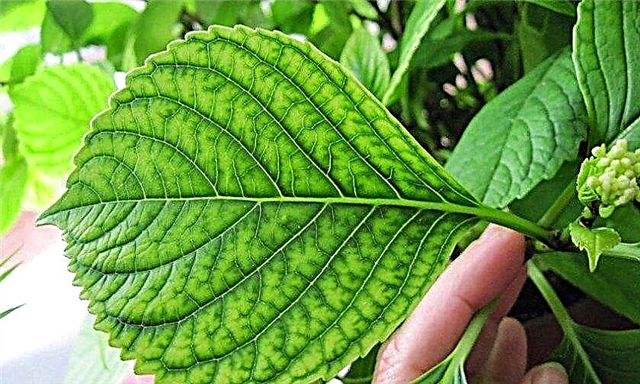
In addition to diseases, hydrangea is sometimes attacked by pests such as leaf aphids, spider mites. You can get rid of them by spraying with strong chemical agents. Suitable "Akarin", "Spark". Also enjoy the bush and slugs. They can be manually removed from the plant and treated with "Molluscicide." It is advisable to use fungicides and insecticides periodically - such preventive measures will help prevent the possibility of ailments. To do this, apply such means as Fitoverm, Aktara, Bordeaux liquid, etc.

Panicle Hydrangea Magic Vesuvius is a good choice for planting. The plant survives well in different climatic conditions and, with proper care, will delight with its decorative effect for decades.







